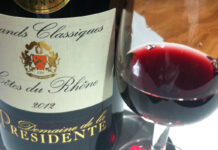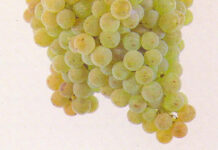Luke Richardson is a sommelier who has worked in a range of venues across the UK in a career spanning more than 20 years. In his column for SLTN he shares his thoughts on all things wine-related and answers your questions about wine. If you have a question for Luke email it to sltn@peeblesmedia.com

Hello again all.
This time around I thought I would talk a little about some alternatives to the usual suspects and why you might want to consider using them. I’ve been travelling around our fair land a fair bit this month and yet have only stumbled across a handful of grape varieties in my travels – Merlot, Syrah/Shiraz, Malbec, Sauvignon Blanc, Pinot Grigio and Chardonnay. There are many alternatives to the styles of wines produced from these grapes that are price competitive and have the kudos of being a bit different and yet very satisfying on the palate too – and potentially worth it to stand out a bit from the crowd.
Starting with the whites, there are a couple of good alternatives to a Sauvignon Blanc. Firstly, Rheingau Riesling – grassy, dry, crisp, high acidity and very easy to drink – although for some reason there is still an unfortunate railing against drinking Riesling. It is a shame, as lots of people are missing out on delicious drinking! Another option would be Sicilian Grillo – albeit a bit more fleshy, it would sate the thirst of those looking for the more voluptuous fruit one may get from a New Zealand Sauvignon.
Cortese, the grape of Gavi, is a great alternative to Pinot Grigio and often better value pound for pound. Mostly produced in the far north of Italy, it has a similar texture and body to Pinot Grigio but more yellow fruit flavours than its neighbour. Another alternative would be Pecorino, named after lamb’s tails due to the shape of the bunches of grapes. Again more yellow flavours here like confit lemon, with a bit of texture to the fruit and a good mineral backbone in the good ones. Best examples from the Abruzzo region of Italy, specifically the Terre di Chieti sub-region that are filtering through to the market now.
Chardonnay is a difficult one to counter to be honest as this is one of only a few grape varieties that can be processed into practically any style of wine. Most are a little rounded, fruity and with a hint of oak, and for this style I would recommend a Roussanne from the Rhone valley – a touch hard to find, but worth it. An alternative would be an oak-aged white Rioja, preferably made from the Viura grape variety. Oaked Godello from Galicia would also fit although it is generally more pear and apricot fruit than anything else. Hunter Valley Semillon is also a good recommendation, although a little nuttier than the luscious fruit of the aforementioned Godello.
If you feel it necessary to stick with a Chardonnay, I would highly recommend those from the Languedoc in Southern France. Over the last decade or so they have really improved and now offer not only great value for money but also great quality too.
Wine can often look like an after-thought on a menu, but with a little bit of (potentially highly enjoyable) research, you can showcase a few more interesting grape varieties for your customers. Until next time, happy substituting!























